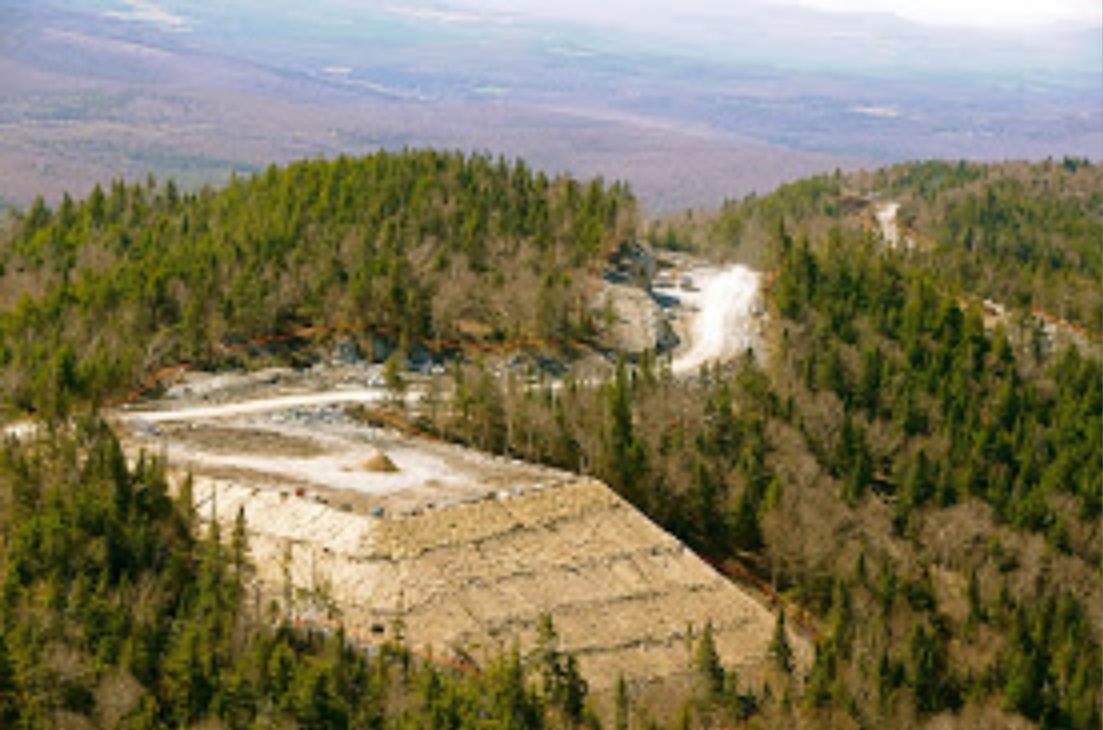Vermont’s Energy Options
Energize Vermont released the documentary Vermont’s Energy Options in 2011. It remains relevant today. The video features some of Vermont’s foremost experts on environment, wildlife, and energy. Neighbors of industrial wind energy complexes and prominent politicians of the day also appear. Scroll down to see a partial list of the people that you will see in Vermont’s Energy Options.
The documentary explores the impacts of industrial energy projects and contrasts utility-scale projects with community-scale efforts.
The documentary was produced at a time when the energy industry saw the opportunity for big profits in the development of Vermont’s mountains. David Blittersdorf appears in the video explaining the need to industrialize 200 miles of Vermont ridgelines, sacrificing our most sensitive wildlife habitat for intermittent energy production. State and local politicians enthusiastically supported blasting the tops of our mountains as a demonstration of Vermont’s commitment to be first in the fight against climate change. Vermont’s then-Governor Peter Shumlin declared that we could not do it fast enough.
While some industrialists still promote large-scale development of Vermont’s intact ecosystems as a (dubious) means to mitigate climate change, a majority of Vermonters now favor preservation of our undeveloped lands.
There may be no better illustration of this change in attitude than the Northeast Vermont Development Association. The NVDA is the regional planning commission for Vermont’s Northeast Kingdom. It was created by the Vermont Legislature to guide the region’s land use and energy development, among other things. The NVDA is governed by a board of directors made up of legislators, business, and civic leaders from the Kingdom’s 55 cities and towns.
In 2005 the NVDA’s energy plan for the Kingdom said, “As a statement of policy, NVDA supports the construction of wind towers.” The plan also said, “Wind Towers should be seen as beneficial to the region.”
But, in June 2012, in a near-unanimous vote, the NVDA’s board of directors passed a resolution calling for a three-year suspension of wind development in the Kingdom to enable study of the wind issue. The NVDA created a Wind Study Committee that was chaired by the highly respected former senator, Jim Greenwood.
The committee met with wind developers, turbine neighbors, utility executives, state officials, and all manner of experts. After lengthy deliberation, the committee found that the benefits of wind were dubious and did not outweigh the substantial negatives.
In March 2015, the NVDA’s board accepted the committee’s findings and unanimously approved a statement that concluded, “It is the position of the NVDA that no further development of industrial wind energy complexes should take place in the Northeast Kingdom.”
So, from 2005 to 2015, having learned from its experience with the Sheffield and Lowell wind projects, the NVDA went from welcoming wind turbines to opposing further development.
In the face of overwhelming opposition, industrialists have abandoned wind projects in Ira, Swanton, Derby, Newark, Ferdinand, Irasburg, Windham, Grafton, and elsewhere across Vermont.
Vermont is not the only place that sentiment about wind energy has changed. Projects that threaten to damage communities and degrade the environment now meet fierce opposition almost everywhere they are proposed.
Further dimming prospects for wind developers, some operating wind projects have been found to be so damaging that they are being ordered to shut down. In 2017, a Barnstable (Massachusetts) Superior Court Judge declared that two Falmouth turbines were a nuisance and ordered them to cease operation.
Energize Vermont favors responsible energy development: projects carried out by the communities that they will serve—projects that adhere to our principles for responsible energy development.
Vermont’s Energy Options
Starring (in order of appearance)
Lukas Snelling – Former Executive Director, Energize Vermont
David Blittersdorf--Industrialist
Robbin Clark—Lowell, Vermont
Annette Smith—Executive Director, Vermonters for a Clean Environment
Ben Luce—Physics Department, Northern Vermont University
Peter Shumlin—Former governor of Vermont
Geoff Goll—President; Principal Engineer, and founder Princeton Hydro
Steve Wright—Former Commissioner, Vermont Department of Fish and Wildlife
Susan Morse—Founder, Keeping Track
Chris Magee—Massachusetts Institute of Technology
Mary Ellen Jones—Cohocton, New York
Hal and Judy Graham—Cohocton, New York
Paul Fonteyn—President, Green Mountain College
Gaelan Brown—One Percent for the Planet
Michael Obuchowski—Former Vermont state legislator
Paul and Carol Brouha—Sutton, VT
Justin Lindholm—Former Vermont Fish and Wildlife Board member
With cameo appearances by
Margaret Cheney
Liz Gamache
Paul Burns
David (now Christine) Hallquist
Tony Klein
This was Lowell Mountain before Green Mountain Power got there—a cool mountain forest
Photo courtesy of Vermonters for a Clean Environment
They did a little blasting…
… brought in the heavy equipment
Photo by Steve Wright
…and turned that cool forest into a hot rock.
Photo by Steve Wright



